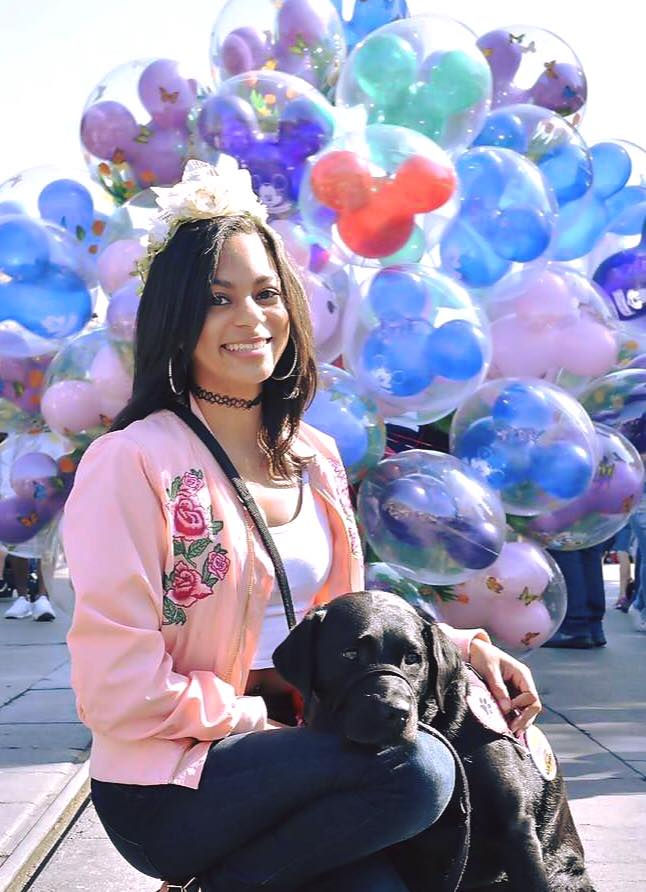
Imagine being a young woman off at college for the first time and having your dorm mates call an ambulance multiple times because your blood sugar was so low they couldn’t wake you up. That’s what happened to Monique La Bomme, who was first diagnosed with Type 1 diabetes when she was 13 years old.
“Ever since I was diagnosed, my doctors had always said I was a brittle Type 1 diabetic,” she said. “No matter what they did, what worked one week for me wouldn't work the next week.” When Monique went away to San Jose State University for college, the challenge of managing her diabetes got bigger.
“Going away for school was a big change,” she said. “That's when I started having more extreme lows and highs. It was the very first time I had ever gone into diabetic ketoacidosis.” Away from home for the first time, Monique struggled with wanting to be independent and not have her diabetes force her to live with someone. She was researching her options, and spoke with a family friend and another student in her dorm, both of whom had diabetic alert dogs.
That journey led her to Early Alert Canines, and a Labrador Retriever named Waimea. “I paid an application fee to two other organizations, and they never even got in touch with me again,” she said. “EAC was responsive from the very beginning.”
Waimea changed Monique’s life. “Ever since I got Waimea two years ago, I haven’t had DKA even once,” she said. “I haven’t had any extreme lows.” Prior to getting Waimea, Monique had particularly disliked using sensors. “I didn't want two devices connected to me because I was on a pump - but what really astonished me is that she is always 30 minutes to an hour ahead of the time the sensor goes off!” She continued, “I think initially I thought she would be kind of robotic, but it's not that way at all. She's like a regular dog at home. Even if there are distractions, like when we're out in public and somebody else is distracting her, or my niece and nephew, who are two and seven, are around and they're literally wrestling with her, she will stop everything and alert me. I think that's a big thing. I was really afraid of her being distracted by other things and she does not let that happen. She stops whatever she's doing and alerts me, and then goes back to playing.”
It was Monique who was playing during one of Waimea’s most lifesaving alerts, though. “We were at Disneyland, and she didn't get on the ride with me,” Monique said. “I let her sit out with a family member. When I came off the ride, she was sitting up staring at me as I was walking toward them. By the time I got to the bench, she alerted and I tested. I think my blood sugar was 115. “We sat there for a little bit talking, and then she alerted again. I was at 90, so I turned to my family and said, ‘Okay. We've got to go get something to eat. I'm dropping fast.’ But the moment I stood up, Waimea ran and stopped in front of me. Every time I would try to take a step, she wouldn't let me move.” After a few minutes of Waimea obstructing her, Monique wondered if the dog was just tired and overloaded from being at Disneyland all day. But to humor her dog, she tested her blood sugar again. This time, it was 60. “She sat there and watched me test that time, and after that she let me go get something to eat,” Monique said. “It was amazing.”
In addition to counting on Waimea, Monique says she can always count on EAC. “They're always there when I need them,” she said. “I know I've called Carol plenty of times in the middle of the night with questions about Waimea. They've always been willing to answer the phones even in the middle of the night. And if I can't get in touch with Carol right away, someone will always call me back quickly. I never have to beg for an answer.” Monique encouraged everyone with diabetes to explore the possibility of an alert dog. “I think everyone should have the opportunity to have a dog,” she said. “It's definitely a life-changing experience.”

コメント